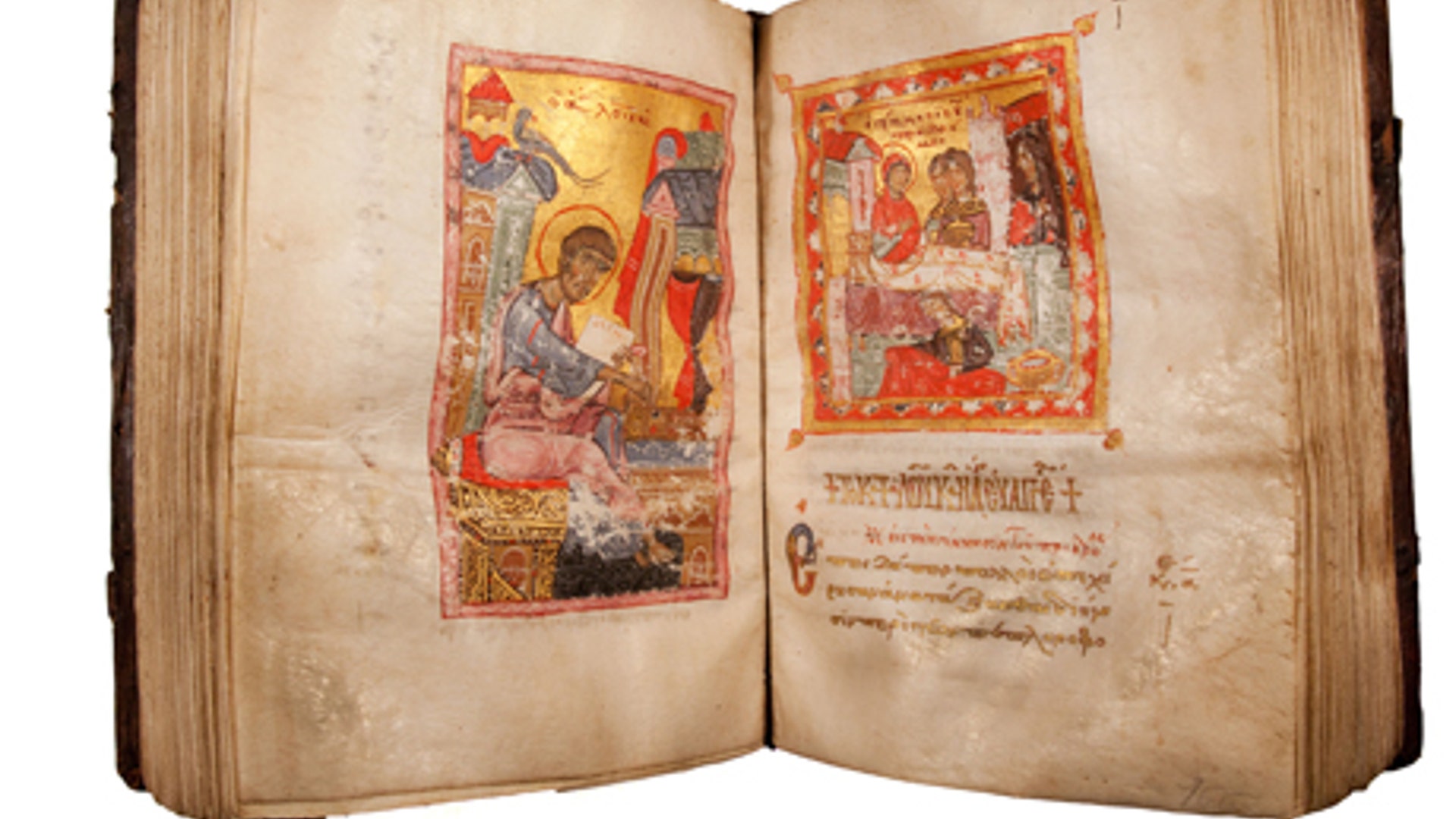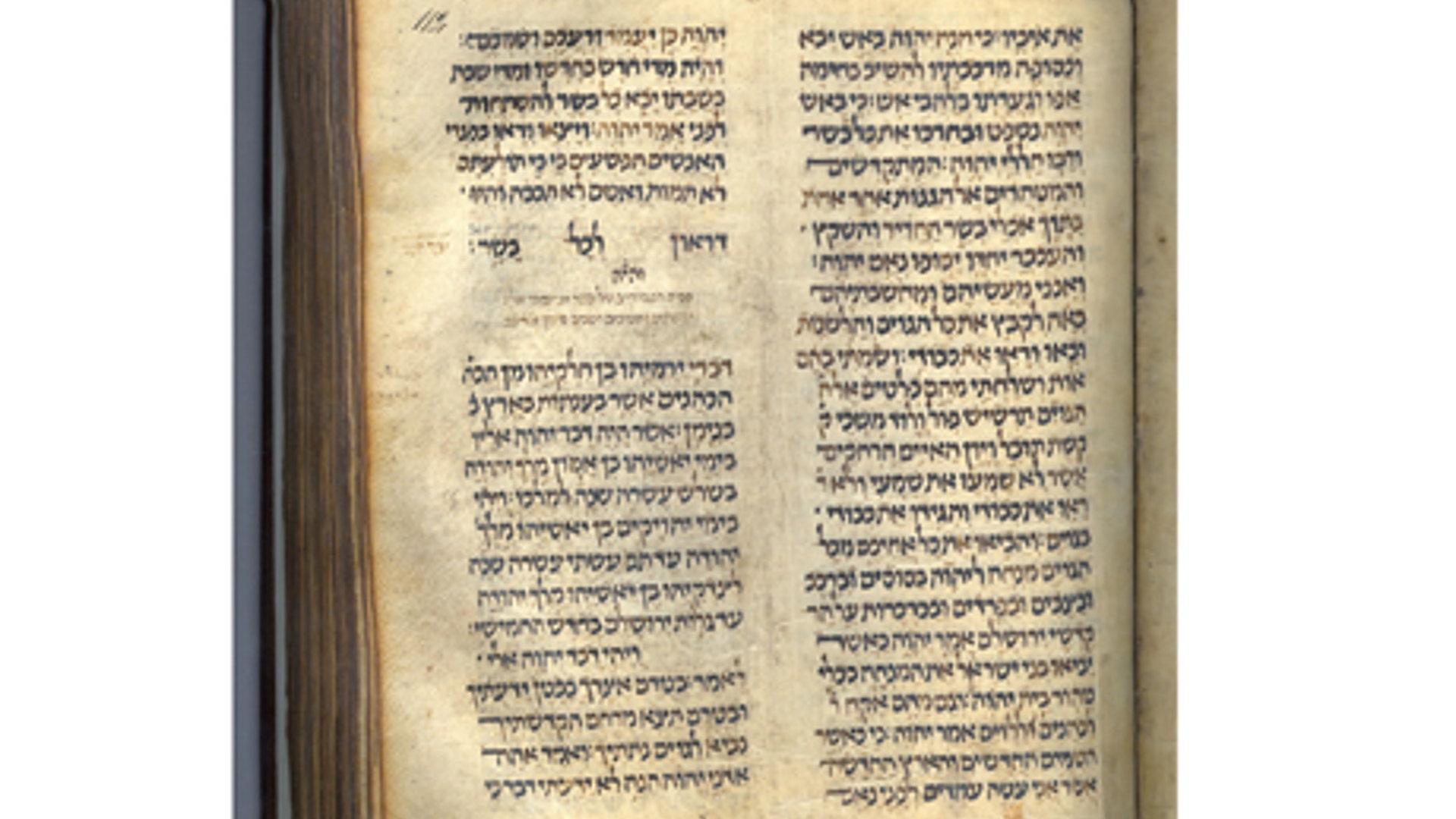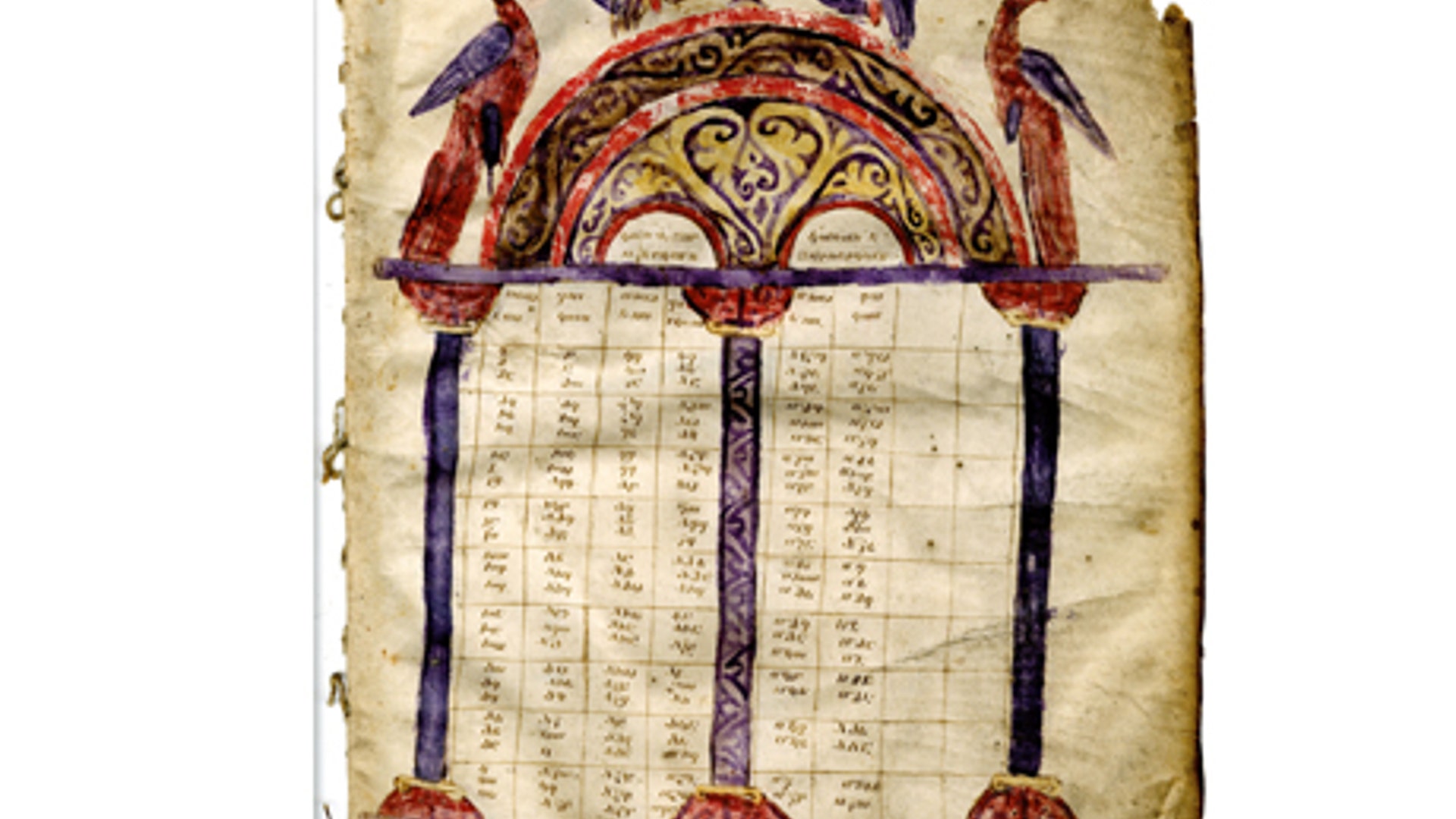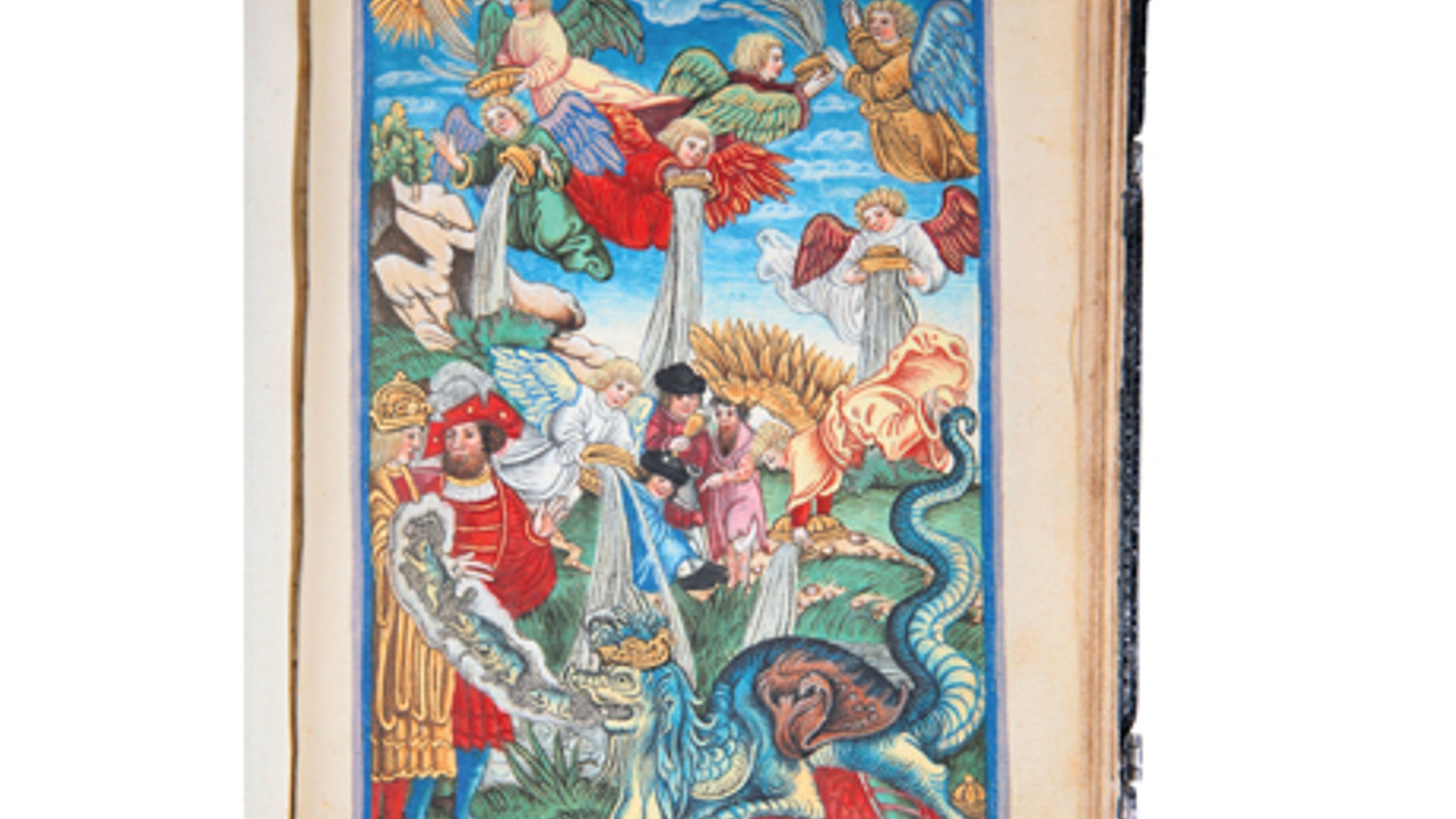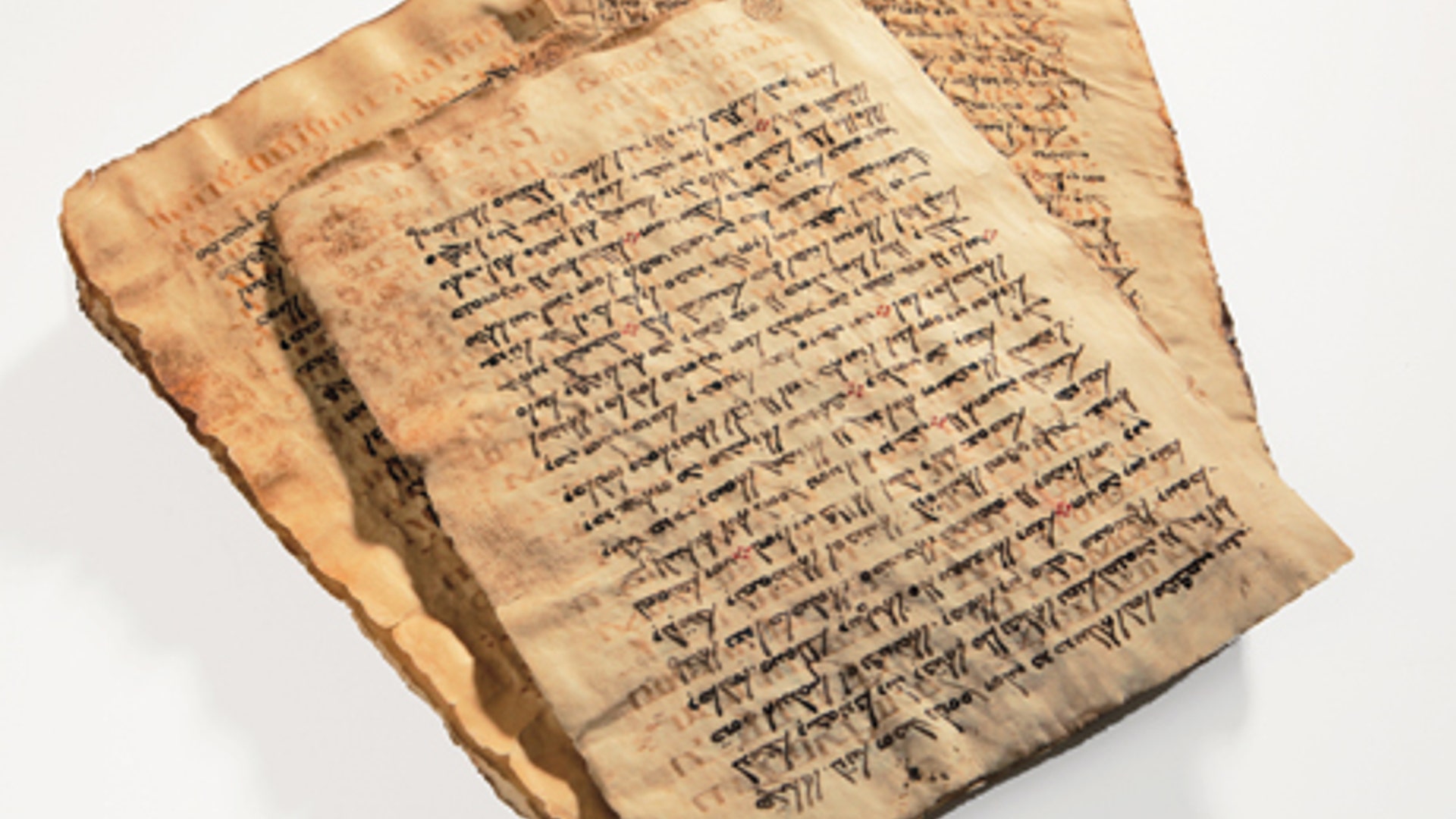Move Back
ADVERTISEMENT
Skip- Published25 Images
The Green Collection: Rare Biblical Artifacts
Steve Green's collection includes more than 44,000 pieces, including cuneiform tablet, pieces of the Dead Sea Scrolls and rare illuminated manuscripts. "Scroll" through for more images.
![John of Crete Gospels]() This manuscript contains the Gospels, Eusebian Canon Tables and portraits of the Evangelists. Each Gospel begins with a folio written with gold-over-magenta. Similar to other eastern Mediterranean and Palestinian Gospel manuscripts, it was copied in 1156 for the John of Crete, Archbishop of Cyprus.read moreCourtesy of The Green CollectionShare
This manuscript contains the Gospels, Eusebian Canon Tables and portraits of the Evangelists. Each Gospel begins with a folio written with gold-over-magenta. Similar to other eastern Mediterranean and Palestinian Gospel manuscripts, it was copied in 1156 for the John of Crete, Archbishop of Cyprus.read moreCourtesy of The Green CollectionShare![Spanish Inquisition Torah Scroll]() This Sephardic Scroll is written on gvil, a specially processed skin. It was produced in Northern Spain during the thirteenth century Spanish Inquisition, a period of persecution Jews that resulted in their expulsion from the region. Few scrolls survived this period.read moreCourtesy of The Green CollectionShare
This Sephardic Scroll is written on gvil, a specially processed skin. It was produced in Northern Spain during the thirteenth century Spanish Inquisition, a period of persecution Jews that resulted in their expulsion from the region. Few scrolls survived this period.read moreCourtesy of The Green CollectionShare![Karaite Former and Later Prophets]()
![Federigo de Venezia, Commentary on the Apocalypse]() This is one of the earliest-known works that has a vernacular translation of Scripture in Italian. Dating back to 1420, this commentary on the Apocalypse or Revelation by a Dominican named Federigo de Venezia. It examines the text and grammar of the Apocalypse and was translated into Greek likely in Candia, the main town of the Venetian colony on Crete..read moreCourtesy of The Green CollectionShare
This is one of the earliest-known works that has a vernacular translation of Scripture in Italian. Dating back to 1420, this commentary on the Apocalypse or Revelation by a Dominican named Federigo de Venezia. It examines the text and grammar of the Apocalypse and was translated into Greek likely in Candia, the main town of the Venetian colony on Crete..read moreCourtesy of The Green CollectionShare![Ethiopic Gospels]() This 13th century Ancient Ethiopian Gospel book contains a colophon indicating it was commissioned by a woman and dedicated to her daughter. The Gospel book illustrates female literacy and readership of Scripture as well as a mother's desire that her daughter have the privilege to own, cherish and read the Gospels.read moreCourtesy of The Green CollectionShare
This 13th century Ancient Ethiopian Gospel book contains a colophon indicating it was commissioned by a woman and dedicated to her daughter. The Gospel book illustrates female literacy and readership of Scripture as well as a mother's desire that her daughter have the privilege to own, cherish and read the Gospels.read moreCourtesy of The Green CollectionShare![Blockbook Apocalypse]() Considered the finest and earliest of the blockbooks, before the Gutenberg Bible, only fifteen complete copies of this 1463 German edition are recorded. The scenes are colored by hand. Blockbooks were sometimes thought to teach the Bible in pictures but some think it more likely they were made for well-off individuals.read moreCourtesy of The Green CollectionShare
Considered the finest and earliest of the blockbooks, before the Gutenberg Bible, only fifteen complete copies of this 1463 German edition are recorded. The scenes are colored by hand. Blockbooks were sometimes thought to teach the Bible in pictures but some think it more likely they were made for well-off individuals.read moreCourtesy of The Green CollectionShare![Biblia Pauperum]() The pages from this near-complete blockbook were printed from single carved blocks containing the first edition of this popular work, written in Latin. This method of printing was before Gutenberg's moveable typeset printing and even continued to be used after Gutenberg's innovation. Blockbooks allowed for the first printing on demand, because the page did not need to be composited and they allowed printers to combine the text and image.read moreCourtesy of The Green CollectionShare
The pages from this near-complete blockbook were printed from single carved blocks containing the first edition of this popular work, written in Latin. This method of printing was before Gutenberg's moveable typeset printing and even continued to be used after Gutenberg's innovation. Blockbooks allowed for the first printing on demand, because the page did not need to be composited and they allowed printers to combine the text and image.read moreCourtesy of The Green CollectionShare![Gospels of St. Matthew and St. John with Canon Tables:]() The largest surviving fragment of an early Armenian Gospel, it dates back to 1040. Few Armenian manuscripts exist from before this none pre-date the mid-ninth century. Armenian illuminated manuscripts are among the most richly lavished screen fold books of the Christian Church. The Eusebian Canon Tables provide a cross-reference system for the Gospels and are commonly well decorated.read moreCourtesy of The Green CollectionShare
The largest surviving fragment of an early Armenian Gospel, it dates back to 1040. Few Armenian manuscripts exist from before this none pre-date the mid-ninth century. Armenian illuminated manuscripts are among the most richly lavished screen fold books of the Christian Church. The Eusebian Canon Tables provide a cross-reference system for the Gospels and are commonly well decorated.read moreCourtesy of The Green CollectionShare![Book of Psalms]()
![Greek Gospel]()
![New Testament]()
![Scroll Cover]()
![Blockbook]()
![Genesis]()
![Torah]()
![The Matthias Bible]()
![William Tyndale, New Testament]() This undocumented Tyndale New Testament dates to just prior to his 1535 execution. Each book is preceded by chapter summaries and followed by a biographical sketch of the author. The first complete edition appeared in 1526 and was fully revised in 1534, but only a few copies of each remain.read moreCourtesy of The Green CollectionShare
This undocumented Tyndale New Testament dates to just prior to his 1535 execution. Each book is preceded by chapter summaries and followed by a biographical sketch of the author. The first complete edition appeared in 1526 and was fully revised in 1534, but only a few copies of each remain.read moreCourtesy of The Green CollectionShare![Khabouris New Testament Codex]() According to the colophon of this important version of the New Testament, it was copied in Nineveh, the capital of the Assyrian Empire, from a now-lost manuscript which may have dated to the second century CE. It even has the authenticating seal and signature of the Bishop of Nineveh. Carbon-dating indicates that the copy was made in the eleventh century and is one of the earliest-known, complete Peshitta manuscripts.read moreCourtesy of The Green CollectionShare
According to the colophon of this important version of the New Testament, it was copied in Nineveh, the capital of the Assyrian Empire, from a now-lost manuscript which may have dated to the second century CE. It even has the authenticating seal and signature of the Bishop of Nineveh. Carbon-dating indicates that the copy was made in the eleventh century and is one of the earliest-known, complete Peshitta manuscripts.read moreCourtesy of The Green CollectionShare![Codex Climaci Rescriptus]() Scholars have uncovered this earliest surviving New Testament written in Palestinian Aramaic - the language used in Jesus' household - found on recycled parchment under a layer in this rare manuscript.They did this using a new technology developed by The Green Collection in collaboration with Oxford University.read moreCourtesy of The Green CollectionShare
Scholars have uncovered this earliest surviving New Testament written in Palestinian Aramaic - the language used in Jesus' household - found on recycled parchment under a layer in this rare manuscript.They did this using a new technology developed by The Green Collection in collaboration with Oxford University.read moreCourtesy of The Green CollectionShare![Gospel of St. John]() This half page was once part a codex that contained the Gospel of St. John. It is one of the earliest-known texts of that Gospel dating to the late-second or early third century. It is believed to be composed by a professional scribe in the city of Alexandria. It has the earliest-known page number, which has proved useful for researchers.read moreCourtesy of The Green CollectionShare
This half page was once part a codex that contained the Gospel of St. John. It is one of the earliest-known texts of that Gospel dating to the late-second or early third century. It is believed to be composed by a professional scribe in the city of Alexandria. It has the earliest-known page number, which has proved useful for researchers.read moreCourtesy of The Green CollectionShare![Bodmer Papyrus Codex XXIV]()
![King James Bible]()
![Steve Green]()
![Passages]()
![Carroll and Green]()
- Published25 Images
The Green Collection: Rare Biblical Artifacts
Steve Green's collection includes more than 44,000 pieces, including cuneiform tablet, pieces of the Dead Sea Scrolls and rare illuminated manuscripts. "Scroll" through for more images.
Move Forward
- The Green Collection: Rare Biblical Artifacts

























Thumbnail View
Image 0 of 25
